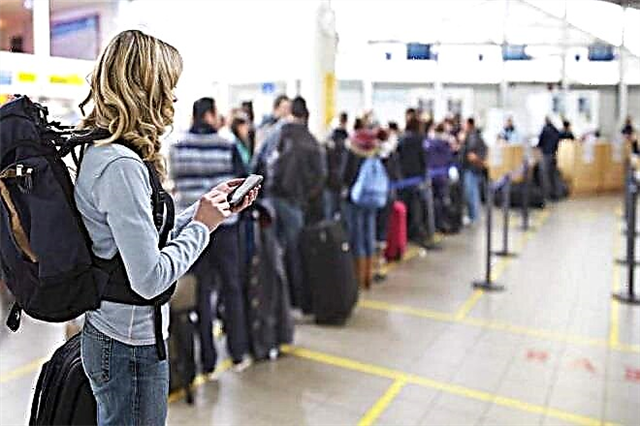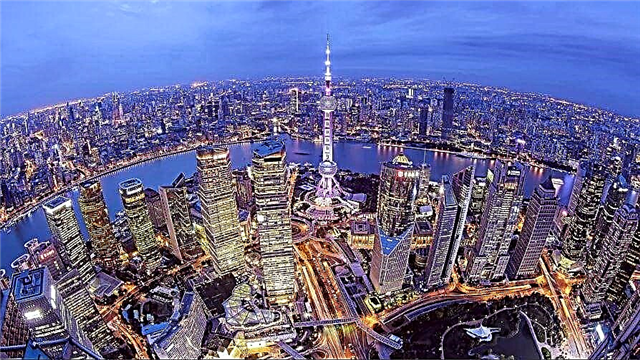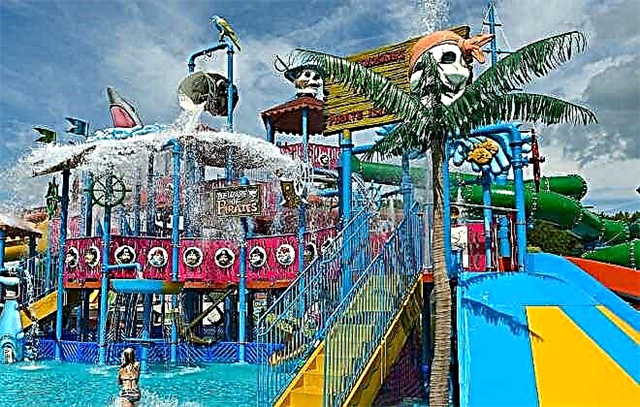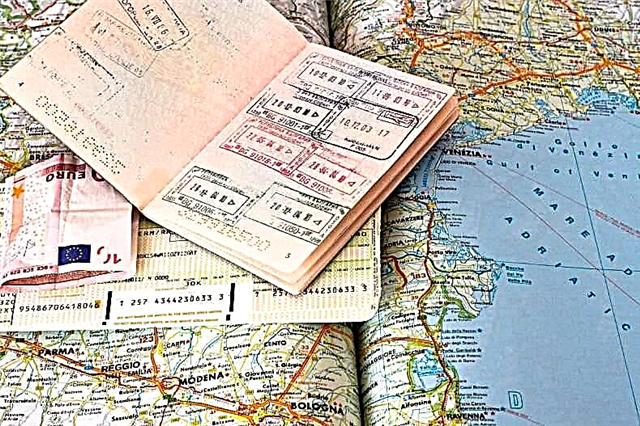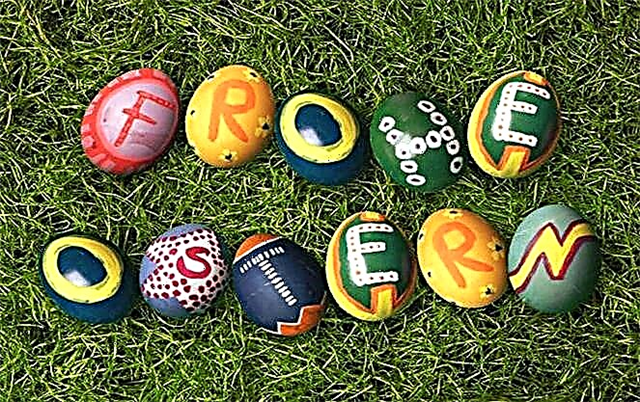Easter in Germany is the most important religious holiday, the traditions of which go back to the distant past. The days of her celebration in the state are days off. German Easter is called Ostern (from the ancient Germanic osten - east). In Christian culture, the east is associated with everything light, with the part of the world where the sun rises, and, of course, with the resurrection of Jesus Christ.

A little about the history of Easter in Germany
In pre-Christian times, the ancient Germans annually celebrated the arrival of spring, the awakening of nature and praised the goddess of fertility Ostara. Perhaps the name of the holiday Ostern also came from her name. The Christian Church was quite tolerant of this folk custom, and then combined it with the holiday of the Resurrection of Christ.
One of the main symbols of Easter - the egg - in paganism was a symbol of fertility, and in the Christian tradition it began to mean new life. The Germans began to consecrate eggs from about the 4th century. Then they began to be painted, as a rule, in red.
The second symbol of the holiday - the Easter bunny - has also been known since pagan times. It was he, according to popular belief, who brought Easter eggs.
When Germans Celebrate Easter
Easter is a so-called rolling church holiday, which does not have a fixed date and is celebrated on different days every year. Calculating the date for the celebration of Easter is quite difficult. According to church canons, it is celebrated on the first Sunday after the full moon after the vernal equinox (March 21). Thus, Easter is celebrated no earlier than March 22 and no later than April 25.

In schools in Germany, holidays are announced at Easter, which are called Osterferien. They can last from 7 to 14 days, depending on the legislation of a particular federal state. Adults are given 3 days off for the celebration.
In 2021, Easter weekend in Germany lasted from March 29 to April 2.
How to prepare for Easter in Germany
They begin to prepare for Easter in advance. Already a few weeks before the holiday, the Germans begin to decorate their homes, buy gifts and think over the menu for the festive table. It is customary to decorate houses not only inside, but also outside. Therefore, colorful eggs can often be seen everywhere: on trees, and on fences, and on the walls of houses.
The symbols of Easter in Germany are daffodils, Easter eggs and rabbits.
It is the rabbit that is the main symbol of Easter in Germany. Here the long-eared even have their own residence, like Santa Claus in Lapland or Santa Claus in Veliky Ustyug - it is located in Ostereysted in Lower Saxony.
The rabbit is an ancient symbol of fertility, so the Catholic Church fought this pagan relic for a very long time. But the tradition turned out to be stronger, and now on the eve of Easter a huge number of ceramic, wooden, gingerbread, chocolate and other hares can be seen literally on every corner.
Bright eggs painted in different colors are considered to be another symbol of the holiday. Over time, they began to be replaced by chocolate or baked dough.
Children often make Easter bouquets from empty painted eggs or their dummies and willow branches, decorating them with colorful ribbons, apples and images of saints.
Traditionally, daffodils, which in Germany are called Easter bells, are used as the main Easter decoration at home and at the festive table: according to local beliefs, they begin to ring on Easter.
How Easter is celebrated in Germany
There are many Easter traditions in the country, each of which has a long history. The "youngest" of them, who came from Switzerland, is a little over a hundred years old. It consists in decorating fountains and wells with ribbons, flowers, and often Easter eggs, in order to emphasize the meaning for a person of water, which is a symbol of life itself. It is no coincidence that in the old days, wells and fountains were cleaned in the spring, which marked the renewal of nature.
On Easter it is also customary to light a candle, preferably from an open fire. Fire is brought into the church with the words “Christ is light!”, And from there the parishioners carry it home.
Easter in Germany is a holiday that is usually spent with the family.
On Sunday, traditionally a festive dinner is held in German homes, after which whole families - with grandparents and young children - go to Easter festivities. As a rule, Germans prefer nature walks.
Children, who believe that the Easter bunny will bring them sweet gifts, are looking forward to Easter with special impatience. Usually, parents buy sweets in advance, put them together with gifts in a basket and hide them somewhere in the house or in the garden, and in the morning the kids, with joyful cries, turn the whole house over in search of surprises from the hare.

And another important element of Easter is the wreath, which characterizes the awakening of nature and its revival to life. It is made from blossoming branches and decorated with sweets (especially chocolate), fruits and ribbons. An Easter wreath in Germany is hung on front doors or windows.
Karfiertag, Ostersonntag and Ostermontag - what is it
German Easter is celebrated for four days, from Friday to Bright Monday.
- Karfreitag or Good Friday is dedicated to the memory of the Savior's death, his removal from the cross and burial. The Germans also call this day "stiller Tag" (quiet day) or "stiller Feiertag" (quiet holiday). Sports competitions, discos and other entertainment events are prohibited on this day. Theaters do not even stage performances that day. Shopping and entertainment centers are often closed on the Friday before Easter.
- According to Christian tradition, Karsamstag or Great Saturday is dedicated to fasting and prayer. In some areas of Germany it is also called "stiller Samstag" or Quiet Saturday.
- Ostersonntag marks the end of Lent and Holy Week. As a rule, on this day, all family members gather for a festive dinner, eat traditional dishes and congratulate each other.
- Ostermontag - Light Monday after Easter, which is a public holiday. On this day, all state institutions are closed, most shops are closed.
What do Germans eat at Easter
Due to the fact that the rabbit is the symbol of Easter in Germany, it is not customary to serve rabbit dishes on the festive table. However, rabbits are certainly present on the table: in the form of chocolate, gingerbread, cakes.
The same applies to eggs - they are always present on the table, but, as a rule, these are not chicken eggs, but beautiful products made from chocolate or marzipan.
Despite the fact that Germans rarely observe fasting, it is customary to set the Easter table on a grand scale. As a rule, Germans serve on a holiday:
- eggs;
- the so-called Easter bread - in fact, it is a piece of meat that is baked in dough;
- fish with vegetables, which is baked in oil or sour cream;
- a lamb cake that symbolizes the lamb of God;
- sweets in the form of rabbits, eggs and other festive symbols (most often gingerbread);
- traditional German strudli with apple, cherry or meat (recipe may vary depending on the area).
How Easter is celebrated in different regions of Germany
In Germany, there are also regional customs for celebrating Easter. Almost all of them are fundamentally different from those that are familiar to Russia.
For example, in Weimar, in memory of the great German poet Goethe, who lived there many years ago, children are invited to the park to look for eggs brought by the Easter bunny. It is there that the poet's garden house is located, who always invited children to look for Easter eggs in his garden on Maundy Thursday.

In Ostereisted in Lower Saxony, every year thousands of children dreaming of holiday gifts write letters to the Easter bunny, and the post office regularly replies to them.
Another rare custom that exists only in Lower Saxony (in the countryside) is going to fetch Easter water. You need to take it in a pond with running water and bring it home without saying a word. Popular belief says that such water has magical properties and helps to maintain beauty and health for a long time.
The season at which Easter is usually celebrated is spring. Therefore, many customs are associated with her arrival. For example, Easter bonfires are made in northern Germany. This custom dates back to pre-Christian times - this is how the pagans drove away the winter cold. In the Christian tradition, the Easter bonfire is a symbol of the resurrection of Jesus Christ. Sometimes, instead of a fire, a huge wooden wheel, symbolizing the sun, is set on fire and rolled on the ground.
How to congratulate your German friends on Easter
There are several traditional phrases that will help you congratulate your German friends on Easter.
- Frohe Ostern! - Happy Easter!
- Ich wünsche Dir frohe Ostern! - I wish you a Happy Easter!
- Ich wünsche Ihnen frohe Ostern! - I wish you a Happy Easter!
- Ein frohes Osterfest! - Happy Easter holidays!
- Fröhliche Ostertag! - Happy Easter!
- Schöne Ostern! - Have a wonderful Easter!
Conclusion
Easter in Germany is one of the most significant religious holidays and is celebrated at the state level. Easter traditions in Germany, which is a Catholic country, are quite different from the Orthodox. One of the main symbols of this holiday is the hare, which, according to legend, brings Easter eggs.




